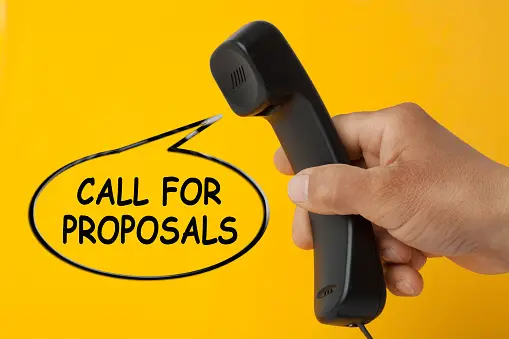Grant proposal writing for beginners provides guidelines on how to get started in grant writing.
Grant proposal writing can be a daunting task, especially for beginners. But with the right approach, knowledge, and tools, it can be a rewarding experience that leads to securing funding for your organization.
Grant proposal writing is an essential aspect of securing funding for non-profit organizations, educational institutions, and government agencies. A well-written grant proposal can make a huge difference in the success of your project, so it’s important to understand the basics of grant proposal writing.
In this article, we’ll cover everything you need to know about grant proposal writing, including the basics, tips for success, and practical examples to help you get started.
What is a Grant Proposal?
A grant proposal is a document that outlines a request for funding from a government agency, foundation, or other funding source. The purpose of a grant proposal is to persuade the funding agency to award your organization a grant that will support a specific project or program. The grant proposal should clearly explain your organization’s goals, the need for funding, how the funds will be used, and how your organization plans to sustain the project or program in the future.
The Basics of Grant Proposal Writing
In this guide, we’ll provide a comprehensive overview of the key components of a successful grant proposal and offer practical examples to help you get started.
We’ll cover the following topics:
- Introduction
- Problem Statement
- Project Description
- Goals and Objectives
- Budget
- Evaluation Plan
- Sustainability Plan
- Conclusion
Problem Statement
The first step in writing a successful grant proposal is to clearly articulate the problem or need that your project will address. This section is commonly referred to as the Problem Statement. In this section, you should describe the current situation and why your project is necessary.
It’s important to use data and statistics to support your argument and to demonstrate the need for your project.
For example, if your organization is proposing a youth mentorship program, you could include statistics on youth crime and dropout rates in the area, and explain how your program will help address these issues.
Project Description
The Project Description section is where you’ll provide a detailed overview of your project and its objectives. This section should include the following information:
- Description of the project activities and methods
- Target population and demographics
- Location of the project
- Timetable for completion
- Partnerships and collaborations
- Expected outcomes and impact
Goals and Objectives
The Goals and Objectives section should outline the specific, measurable outcomes that you expect to achieve with your project. It’s important to be specific and to use clear, concise language to describe your goals. For example, if your organization is proposing a community garden project, one of your goals might be to provide fresh, locally-grown produce for 50 low-income families in the area.
Budget
The Budget section is an essential part of your grant proposal, as it provides the funding agency with a clear understanding of the costs associated with your project. In this section, you should include a detailed breakdown of your expenses, including salaries, materials, and other costs. Make sure to be as specific as possible and to provide clear, concise explanations for each line item.
Evaluation Plan
The Evaluation Plan section should describe how you plan to assess the success of your project. This could include pre- and post-program assessments, surveys of participants and their families, and any other relevant data. The Evaluation Plan is an important part of your grant proposal because it demonstrates your commitment to accountability and transparency, and shows the funding agency that you have a plan in place to measure the impact of your project.
Sustainability Plan
The Sustainability Plan section should describe how you plan to maintain your project beyond the grant period. This section should outline any partnerships or collaborations that will help ensure the long-term success of your project, as well as any strategies you have in place to secure additional funding.
Conclusion
The Conclusion section is your opportunity to summarize the key points of your grant proposal and to reiterate the importance of your project. This section should summarize your goals and objectives, the impact that your project will have on the community, and the need for funding.
Practical Examples of Grant Proposal Writing
To help you get started, here are two practical examples of grant proposal writing:
Example 1: Request for Funding for a Community Garden Project
In this example, a local community organization is seeking funding to establish a community garden that will provide fresh produce for low-income families in the area.
Problem Statement: In this section, the organization provides data and statistics on food insecurity in the area and the high rates of diet-related illnesses among low-income families. They argue that the community garden project is necessary to provide healthy, locally-grown produce for families in need and to help address these pressing issues.
Project Description: The project description outlines the activities and methods that will be used to establish the community garden. It includes details on the location of the garden, the target population and demographics, the timetable for completion, and the partnerships and collaborations that will be established to ensure the success of the project.
Goals and Objectives: The organization outlines specific and measurable goals for the community garden project, such as providing fresh produce for 50 low-income families in the area and reducing diet-related illnesses among the target population.
Budget: The budget section provides a detailed breakdown of the costs associated with the community garden project, including expenses for seeds and plants, tools and equipment, and labor. The organization provides clear explanations for each line item and demonstrates how the funds will be used to achieve the goals of the project.
Evaluation Plan: The evaluation plan outlines the methods that will be used to assess the success of the community garden project, including pre- and post-program assessments of participants and their families, as well as surveys and data analysis.
Sustainability Plan: The sustainability plan describes the partnerships and collaborations that will be established to ensure the long-term success of the community garden project, as well as the strategies that will be used to secure additional funding.
Conclusion: In the conclusion, the organization summarizes the key points of the grant proposal and reiterates the importance of the community garden project. They emphasize the need for funding and the impact that the project will have on the community, and make a final plea for support.





